Maggie Quale was used to pain. A professional ballerina in her late 20s, she made a practice of pushing her body up to — and often past — its limits. During the day, she strived to perform dazzling arabesques and grand jetés. At night, she fell asleep replaying the day’s exercises in her head. She knew she was obsessive about dance but felt it was the only way to be successful. And she didn’t want to let her mounting injuries get in the way.
“It was torture to be out of class or rehearsals for one to two days, let alone weeks or months,” says Quale, now a 37-year-old PR consultant and mother of three boys. “Your strength, physique, and technique start to go very quickly, so we would all rush back prematurely and end up dancing with unhealed injuries.”
To push herself past the pain, Quale took Advil. Lots of it.
“All dancers and athletes pop Advil like candy,” she says. “I think a lot of us are under the illusion that we have cast-iron stomachs and that it won’t ever hurt us.”
Then, during intense rehearsals for The Nutcracker, her stomach gave way. Her pain felt like intense hunger, a nonstop gnawing in her gut. After a couple of days, it changed to sharper pain — like the tip of a knife pressed into her sternum. A trip to the doctor confirmed what she feared: All that Advil had given her an ulcer.
Quale is hardly the first athlete to suffer an injury from nonsteroidal anti-inflammatory drugs, known as NSAIDs (pronounced “N-seds”). This group of medications includes ibuprofen (with such over-the-counter brands as Advil and Motrin), naproxen (Aleve), and aspirin. (For a list of other NSAIDs, see “Common NSAIDs” below.)
Former Seattle Seahawks football player Kenny Easley was famously diagnosed with severe kidney disease in 1988, the result of taking large amounts of ibuprofen after ankle surgery. Easley had swallowed the ibuprofen hoping to reduce the inflammation around his ankle and get back on the field; instead, the damage to his kidneys ended his career.
NSAIDs can increase the risk for illness in many different parts of the body, and they can interfere with the body’s natural healing process. Overuse can trigger a spiral of inflammation that results in autoimmune disease.
Even nonathletes unwittingly oversuse NSAIDs. Physicians annually write nearly 100 million prescriptions for the drugs in the United States, 20 million in England, and 10 million in Canada. In addition, people buy billions of nonprescription NSAIDs over the counter each year. Americans alone annually purchase 30 billion NSAID tablets, whether in two-pill foil pouches at the airport or in 1,000-count bottles at big-box stores.
Most consumers immediately discard the accompanying instructions that warn of the dangers of these medications without reading them. And even the most dire of those warnings — called “black box” warnings and ordered by the FDA for products that may cause serious adverse reactions — don’t present the full picture of the dangers NSAIDs pose, both immediately and over time.
“If you go someplace and say you have a headache, it seems as if everyone has some NSAIDs in their purse or backpack or drawer,” says Sunil Pai, MD, medical director of Sanjevani Integrative Medicine in Albuquerque. “But I’d say at least 95 percent of the population, as well as most doctors and pharmacists, don’t know that there is a black-box warning on all NSAIDs.”
That lack of knowledge can be deadly.
Every year, some 100,000 people are hospitalized in the United States with gastrointestinal bleeding from taking NSAIDs, and 16,500 of them die.
Even that statistic, as horrible as it is, doesn’t present the full picture.
NSAIDs can increase the risk for illness in many different parts of the body, and they can interfere with the body’s natural healing process. Overuse can trigger a spiral of inflammation that results in autoimmune disease.
And here’s the shocker: Some people who take NSAIDs over a long period of time may actually worsen the underlying condition that causes their pain and inflammation.
A Slippery Slope
NSAIDs made their debut back in the 19th century, when the active ingredient for aspirin was isolated from a family of shrubs that ancient Egyptians used for aches and pains. By 1969, demand for stronger painkillers produced another NSAIDs contender: ibuprofen, which was introduced as a treatment for rheumatoid arthritis. This was followed by naproxen in 1976.
Like acetaminophen (sold under brand names such as Tylenol and Anacin), NSAIDs reduce pain and fever. But unlike acetaminophen, NSAIDs also reduce inflammation. (For more, see “Taking Acetaminophen? Handle With Care,” below.)
NSAIDs are often prescribed for people with arthritis, but amazingly, some research suggests that while these medications can reduce patients’ pain and inflammation in the short term, the long-term effect can make their arthritis worse.
NSAIDs battle inflammation by inhibiting the action of two enzymes: cyclooxygenase 1 and cyclooxygenase 2, referred to as COX 1 and COX 2. These enzymes create lipids called prostaglandins, which regulate gastrointestinal, renal, vascular, and other physiological functions. These same enzymes also create a cascade of pain, fever, and inflammation when there’s a problem with our bodies. That’s one of the concerns about taking these medications: They mask valuable signals that we have a problem and allow us to push past the pain over and over, sometimes causing greater injury.
Another concern arises from the fact that these prostaglandins have many other important jobs within the body, and NSAIDs can block them all. So when we treat our pain, fever, and inflammation, we also negatively affect other critically important functions throughout the body, with the resulting problems:
Bleeding Ulcers
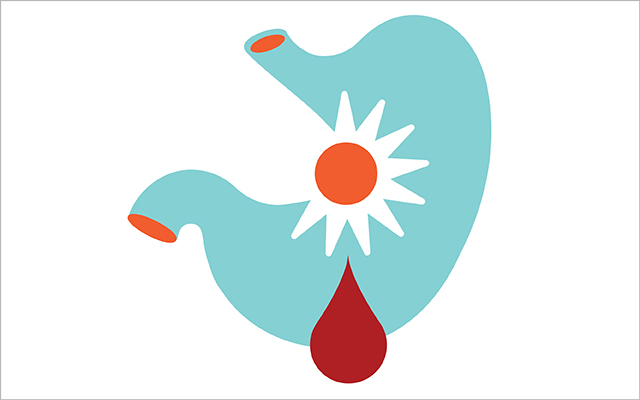 Maggie Quale’s experience with ibuprofen is quite common — in fact, people who take NSAIDs are five times as likely to develop ulcers as people who do not. The problem is that the prostaglandins produced by the COX 1 enzyme also protect the mucosal stomach lining from the acids we produce to break down our foods, and when we take NSAIDs, these acids can pierce the lining and cause sores, or ulcers, that bleed. And because some NSAIDs also thin the blood, we can lose an alarming amount of blood through the lining.
Maggie Quale’s experience with ibuprofen is quite common — in fact, people who take NSAIDs are five times as likely to develop ulcers as people who do not. The problem is that the prostaglandins produced by the COX 1 enzyme also protect the mucosal stomach lining from the acids we produce to break down our foods, and when we take NSAIDs, these acids can pierce the lining and cause sores, or ulcers, that bleed. And because some NSAIDs also thin the blood, we can lose an alarming amount of blood through the lining.
Leaky Gut Syndrome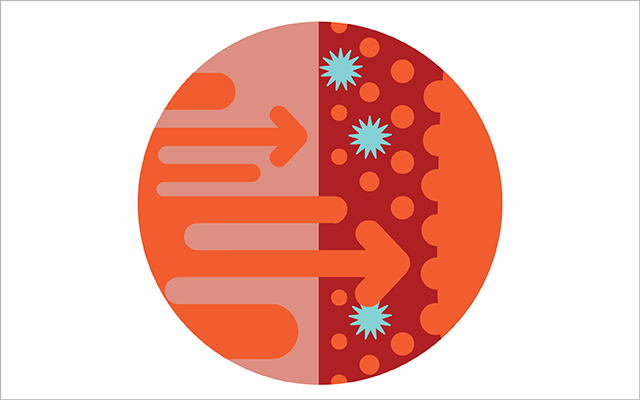
NSAIDs-inflicted damage can extend to our small intestines, too, leading to a condition called leaky gut syndrome. Normally, the intestinal wall allows only tiny amino acids to pass through it. But as it frays under an NSAIDs onslaught, the wall becomes more porous and allows larger molecules to escape into the blood and lymph before the molecules have been broken down into their component parts through digestion. The immune system is alerted to the presence of these larger molecules, but it does not recognize them. Instead, it treats them like alien invaders and goes on the attack.
“That’s one of the underlying causes of autoimmune disease,” says Dan Lukaczer, ND, a naturopath and associate director of medical education at the Institute for Functional Medicine. Among these autoimmune conditions are celiac disease, lupus, rheumatoid arthritis, asthma, scleroderma, and thyroiditis; the list goes on and on. (For more on autoimmune disorders, see “Autoimmune Disorders: When Your Body Turns On You“.)
“Autoimmune conditions are always a combination of genes and environment, beginning with a genetic predisposition followed by a trigger like a leaky gut,” Lukaczer continues. “The trigger can then start a cycle, whereby inflammation begets inflammation. After a while, the process doesn’t even need a trigger anymore.”
Renal and Cardiac Risks
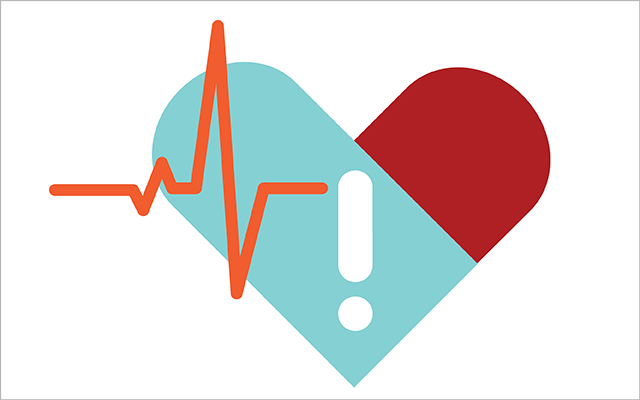 Because they’ve been told over and over to take low doses of aspirin — an NSAID — to protect their hearts, most people are surprised to hear that NSAIDs pose cardiac risks. It’s true that low doses of aspirin make platelets less sticky and reduce the risk of clot formation. But other NSAIDs have slightly different mechanisms and can increase the risk of heart attack, stroke, and hypertension.
Because they’ve been told over and over to take low doses of aspirin — an NSAID — to protect their hearts, most people are surprised to hear that NSAIDs pose cardiac risks. It’s true that low doses of aspirin make platelets less sticky and reduce the risk of clot formation. But other NSAIDs have slightly different mechanisms and can increase the risk of heart attack, stroke, and hypertension.
A study in the journal Lancet found that people who take high daily doses of NSAIDs increase their cardiovascular risk by a third; the exception was naproxen, which is kinder on the heart but harder on the gut. Another study in the journal Circulation found that for people who had had one heart attack, taking NSAIDs increased their risk of death by nearly 60 percent and of a second heart attack by 30 percent. The study found that naproxen, again, has the lowest cardiovascular risk among the NSAIDs.
The danger is especially great for people over 50 who have a history of heart or kidney problems or hypertension, says Rodolfo Curiel, MD, a rheumatologist and associate professor of medicine at the George Washington School of Medicine and Health Sciences. These people are often taking a number of medications, increasing the risk of bad drug interactions.
“It’s complicated, and sometimes the physicians don’t even understand it very well,” Curiel says. “NSAIDs are widely prescribed by primary-care doctors, but if they are not given to the right person, they can be poisonous. We see lots of problems from this.”
Joint Deterioration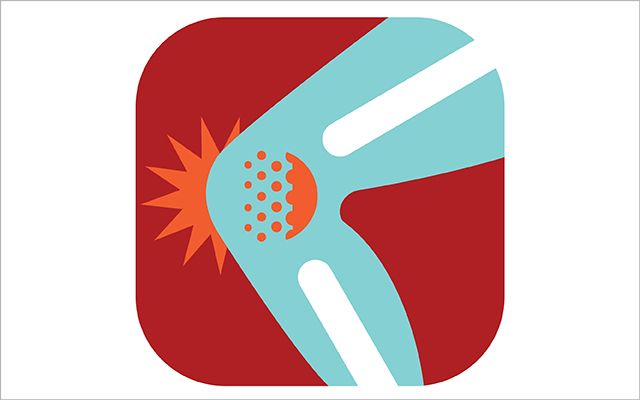
NSAIDs are often prescribed for people with arthritis, but amazingly, some research suggests that while these medications can reduce patients’ pain and inflammation in the short term, the long-term effect can make their arthritis worse. “People are taking this for their joints, but it’s not helping their joint health,” says Pai. “My patients will tell me that they started taking maybe one NSAID a day 20 years ago when they first got arthritis, but that they’re up to taking ibuprofen three to four times a day now and adding in naproxen sodium. They need more because they’ve built up a tolerance and because they have more joint deterioration.”
Could their increased joint deterioration be connected to their use of NSAIDs? Pai points to a study published in the Journal of Rheumatology in 1995 that followed 812 British patients with knee osteoarthritis at 20 clinics. Some of the patients took an NSAID named indomethacin, some took the NSAID tiaprofenic acid, and others took a placebo. The researchers checked the patients’ knees by x-ray every year to see how their joints were holding up. They found that the indomethacin increased the rate of radiological deterioration in the patients’ joint space.
Improper Healing of Broken Bones
 Animal studies have shown that taking NSAIDs soon after a bone breaks can interfere with healing. Most recently, Patrick O’Connor, PhD, and his fellow researchers at the University of Medicine and Dentistry of New Jersey in Newark (now Rutgers New Jersey Medical School), evaluated the healing process in rats with broken bones, some of which were given Celebrex, a popular prescription NSAID. When they checked the stability of the bone after eight weeks, they found that the Celebrex impaired healing.
Animal studies have shown that taking NSAIDs soon after a bone breaks can interfere with healing. Most recently, Patrick O’Connor, PhD, and his fellow researchers at the University of Medicine and Dentistry of New Jersey in Newark (now Rutgers New Jersey Medical School), evaluated the healing process in rats with broken bones, some of which were given Celebrex, a popular prescription NSAID. When they checked the stability of the bone after eight weeks, they found that the Celebrex impaired healing.
After a fracture, a cartilage template normally forms between the two broken pieces, and later, the template is replaced with new bone. “With the Celebrex, there is a defect in the cartilage template that stops the new bone from forming,” O’Connor explains. “We’re still trying to understand the mechanism.”
Combatting Pain Without NSAIDs
So, when is it OK to take NSAIDs, and when is it not OK? Most integrative experts agree that NSAIDs are relatively fine for isolated, short-term pain, but when it comes to long-lasting pain or chronic disease, such as arthritis, a more holistic approach is warranted. Many caregivers recommend extreme caution in taking them, especially for longer than a week.
“If someone has a headache or sprained ankle, I may recommend NSAIDs or other painkillers for a few days,” says Lukaczer. “But if they’re having a headache several times each week and dosing with painkillers, that’s chronic use, and it’s time to work on the underlying cause of the pain instead.”
Integrative caregivers generally begin with a look at lifestyle and diet for that underlying cause, and they reach for botanicals that work against chronic pain and inflammation. (For more on this, see “Fighting Inflammation: A Natural Approach,” below.)
“I’ve always looked for alternatives to NSAIDs because I was aware of the side effects,” says Alexa Fleckenstein, MD, author of The Diabetes Cure. “When I [see] people buy bottles of aspirin with a thousand pills, it [strikes] me as so sad. I [see] lives of quiet desperation in those bottles.”
Fleckenstein is a firm believer that health problems and inflammation begin in the gut. She found that her own aches, pains, and fatigue disappeared when she eliminated gluten and dairy from her diet, and she suggests that people suffering chronic pain try the same gut-focused approach. There may still be other foods that set off a cascade of inflammation in the body, and Fleckenstein says that someone will become aware of them only by eliminating the two big offenders first. After she eliminated gluten and dairy, she discovered that apples and cashews also cause her problems. She recommends that people keep food diaries and take note of how their pain coincides with the ingestion of certain foods.
Fleckenstein’s protocol is to spend about an hour and a half with every patient. “You can’t do 15-minute medicine — it all needs to be talked out. But we don’t get that kind of care from our doctors,” she says. “So people have to listen to their bodies. Doctors make fun of people who come in with a long list of symptoms; they call them ‘hypochondriacs.’ But the truth is that only you know what’s going on in your body.”
Many experts urge patients to pursue an anti-inflammatory diet to control their pain, including the all-important omega-3 fatty acids, which have been shown to reduce inflammation. Omega-3s can be found in plants, such as flax, chia, hemp, and algae, and in animal proteins, such as wild-caught fish, grassfed meats, and pastured eggs.
“I have a lot of ranchers as patients, and they won’t eat animal products from a fast-food restaurant or conventional store,” Pai says. “Factory-farmed animal protein has chemicals, hormones, and antibiotics. Those who eat animal proteins should stick to sustainable, organic, grassfed sources.”
Maggie Quale has finally found comfort with an anti-inflammatory diet. She’s careful in her use of medications, too: only a few NSAIDs a year, if necessary, and taken on a full stomach. Plus, she makes certain to get plenty of rest and water, and lots of walking and yoga.
“It’s been a huge learning process,” Quale says. “For a couple of years, I tried to do what I had always done, which was to treat the symptoms and just keep pushing through. But my body kept telling me that wasn’t going to work.”
Fighting Inflammation? A Natural Approach
Pain and inflammation have afflicted humans for millennia, and even when we get our diets in order, we might still need some help managing occasional pain. Many caregivers suggest herbal remedies because they are safer overall and less problematic than NSAIDs, which fight inflammation only by suppressing cyclooxygenase 1 and 2. “Botanical agents and natural anti-inflammatories may also inhibit those enzymes, but they also work on various different aspects of the inflammatory process,” says Dan Lukaczer, ND, associate director of medical education at the Institute for Functional Medicine.
Here are some commonly recommended botanicals that address pain and inflammation. The recommended dosages come from Lukaczer. (Please consult with your healthcare practitioner for an individualized plan.)
- Turmeric: This golden spice, ground from the rhizomes of a plant related to ginger, is a staple of Ayurvedic medicine; its active ingredient is curcumin. Turmeric has been cited in more than 2,500 published studies on numerous conditions, including asthma and cancer. In 2009, the Journal of Alternative and Complementary Medicine found that curcumin is about as effective as ibuprofen in reducing the pain of osteoarthritis of the knee. Like many other botanicals, curcumin is not a quick fix and can take up to two months to be effective. In capsule form, take 750 to 1,500 mg daily. Many practitioners also suggest topical creams containing curcumin.
- Boswellia: This tree produces a resin that is used in incense and is another staple of Ayurvedic medicine. It is used to treat arthritis, ulcerative colitis, coughs, and asthma. Also known as Indian frankincense. In capsule form, take 300 to 400 mg three times daily.
- Ginger: People training for a marathon may want to try this Ayurvedic staple instead of NSAIDs: According to studies, taking ginger can reduce exercise-induced pain by up to 25 percent. Turmeric, boswellia, and ginger are often mixed together into one compound along with black pepper, which is thought to aid absorption. In capsule form, take 500 to 1,000 mg two to three times daily.
- Bromelain: An enzyme derived from pineapple, bromelain has long been used to combat indigestion and inflammation. Recent studies indicate that bromelain might be helpful for both workout-related injuries as well as arthritis. In capsule form, take 250 to 750 mg three times daily without food.
- Capsaicin: The active compound that gives cayenne peppers their heat, capsaicin is made into a topical cream used to treat both muscle aches and arthritic joint pain. It interferes with something called substance P, which is involved in both inflammation and sending pain signals to the brain. Apply capsaicin cream topically three times daily.
- Arnica montana: Topical preparations from this mountain daisylike plant have been used for centuries to treat bruises, sprains, muscle aches, wound healing, joint pain, and swelling from broken bones. One study found that arnica gel worked as well as ibuprofen in reducing pain in people with arthritis in their hands. New studies suggest that arnica may help with burns and postoperative swelling. Topical preparations shouldn’t be applied to broken skin. Use arnica cream topically three times daily, or take three to four pellets (30x to 30c) three to four times daily.
Common NSAIDs
Over-the-Counter Nonprescription:
- Aspirin (Bufferin, Bayer, Excedrin)
- Ibuprofen (Advil, Motrin, Nuprin)
- Naproxen (Aleve)
Prescription:
- Celebrex Naprosyn
- Daypro Relafen
- Indocin Vimovo
- Ketoprofen Voltaren
- Lodine
Taking Acetaminophen? Handle With Care
Acetaminophen, the active ingredient in Tylenol, is not an NSAID, but it is another heavily used over-the-counter medication for pain and fever. First produced by the coal-tar industry in Germany in the late 1800s, acetaminophen (also known as paracetamol) was later found by American researchers to relieve pain as effectively as aspirin but without the stomach problems. The medication was approved by the FDA in 1951. Oddly enough, no one quite knows how it works.
While acetaminophen is considered safe at the recommended dosage — 1,000 mg for a single dose and up to 4,000 mg per day for adults — a modest overdose can be dangerous and even fatal. Acetaminophen overdoses are the leading cause of acute liver failure in the United States, and use of the medication is especially problematic for heavy drinkers and anyone with a history of liver problems.
Tragically, it’s easy to overdose on acetaminophen because of its ubiquity in over-the-counter and even prescription drugs. If someone has a cold, she may take Tylenol to reduce her fever and may take care to stick to the recommended dosage. But, she may not realize that acetaminophen is also the active ingredient in the Vicks NyQuil Cold & Flu Relief or the Comtrex Cold & Cough she’s also taking; without realizing it, she’s taking a potentially toxic dose. According to an FDA report quoted in a 2013 story on NPR’s This American Life, the drug’s narrow safety margin places “a large fraction of users close to a toxic dose in the ordinary course of use.”
As with NSAIDs, integrative practitioners recommend that we use powerful over-the-counter medications like acetaminophen rarely and sparingly.
This article originally appeared as “This Is Your Body on Ibuprofen.”

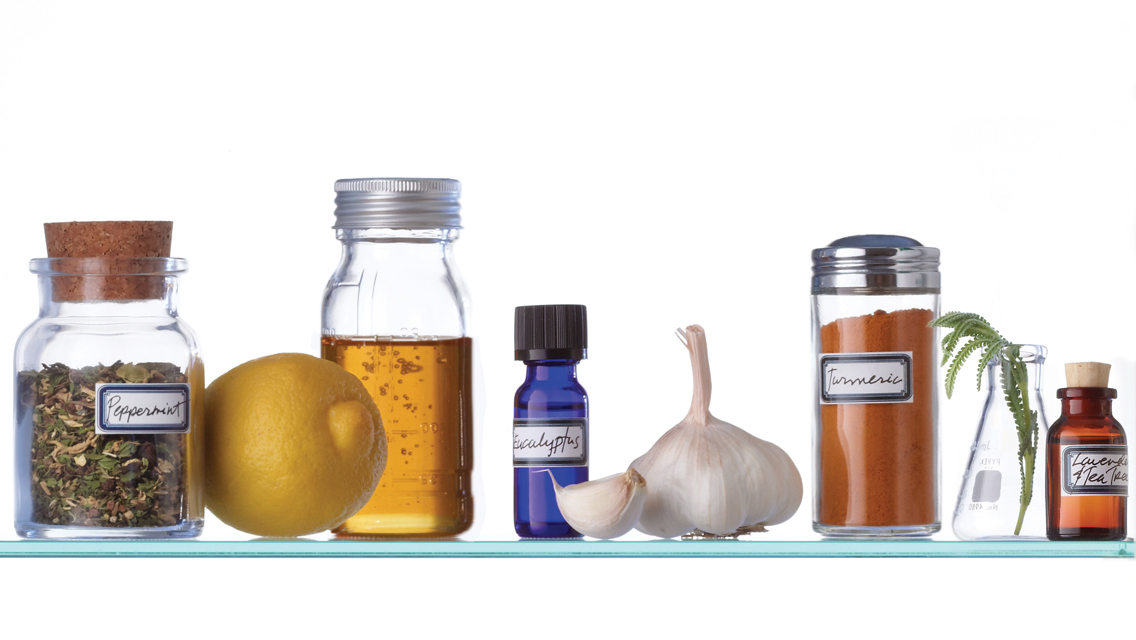

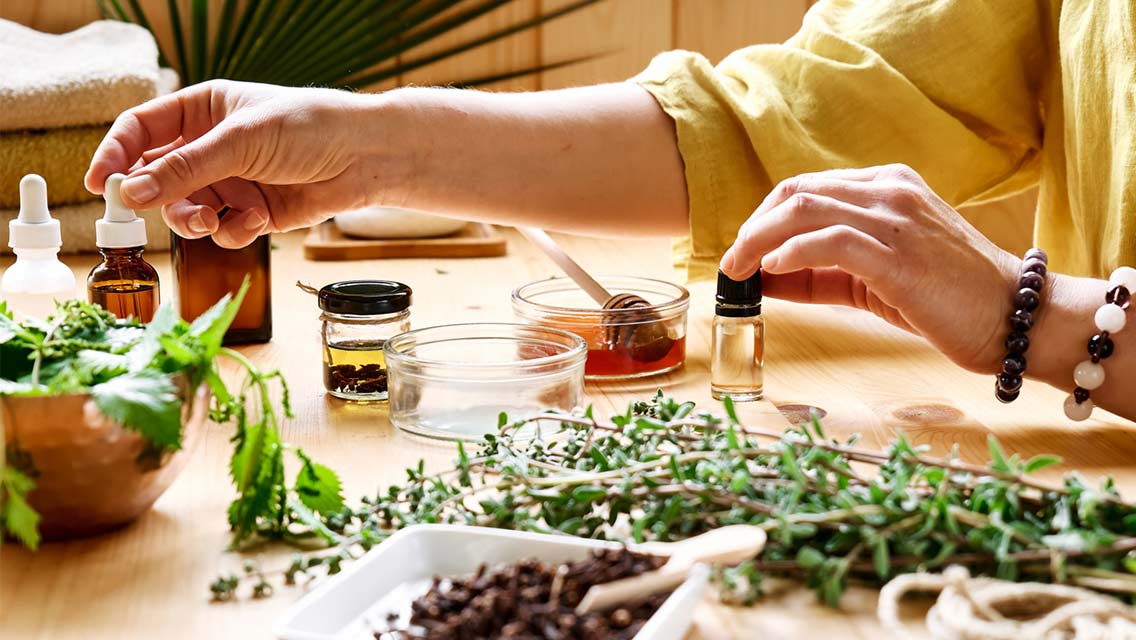
This Post Has One Comment
[…] includes a breakdown of wholesome tissue within the muscle and tendon. Because of this, popping an over-the-counter anti-inflammatory, like aspirin or ibuprofen, received’t do a lot to alleviate signs — however therapeutic […]